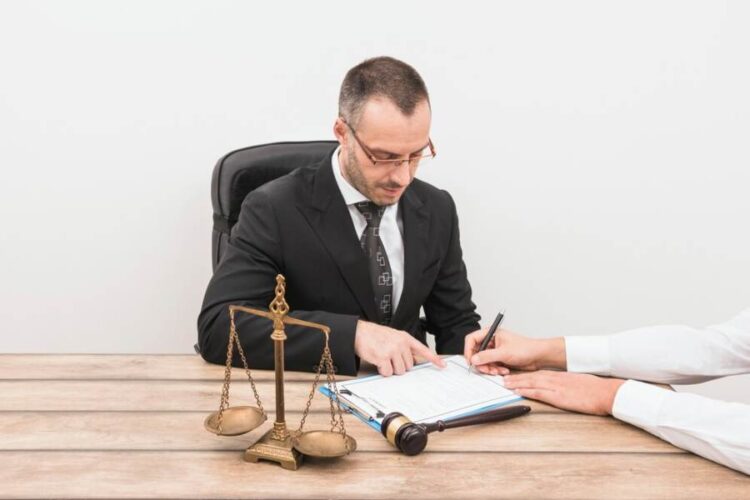Let’s face it—when you’re in a car accident, things get confusing fast. One minute you’re dealing with a crumpled bumper, and the next, you’re staring down medical bills, confusing paperwork, and a chorus of insurance agents all asking the same thing: “Who was at fault?”
Here’s where it gets tricky. In Georgia, it’s not always black and white. Fault isn’t just about who hit whom—it’s about how much each party contributed to the crash. And that can seriously impact what you’re owed.
Understanding how comparative negligence works in Georgia is key to making sure you don’t get shortchanged. Whether you’re mildly bruised or dealing with major injuries, knowing how your percentage of fault affects your case could be the difference between a full recovery and a financial headache.
If you’ve ever searched for automotive legal advice after an accident, chances are you’ve come across terms like “modified comparative fault” or “51% rule.” Don’t worry—we’re breaking it all down into plain English. So buckle up, and let’s get into what you really need to know.
What Is Comparative Negligence, Anyway?
In simple terms, comparative negligence means that more than one person can be held responsible for a car accident. Unlike some states where one driver is either 100% right or 100% wrong, Georgia allows fault to be shared based on each person’s contribution to the crash.
So instead of asking “Who caused it?”, the question becomes: “How much blame does each person deserve?”
Let’s say Driver A ran a red light, but Driver B was texting and didn’t brake in time. A court or insurance adjuster might decide Driver A is 70% at fault and Driver B is 30% at fault. This matters—big time—when it comes to compensation.
Georgia’s 50% Bar Rule: Why 51% Is the Magic Number
Georgia follows what’s known as modified comparative negligence, with a specific cutoff point. If you’re 50% or less at fault, you can still recover damages. But the amount you receive gets reduced by your percentage of fault.
Go over that line—51% or more—and you’re out of luck. You can’t collect anything. Not for medical expenses, car repairs, lost wages—nothing.
Here’s an example to make it real:
- Let’s say your damages total $20,000.
- If you’re found 30% at fault, you’ll get 70% of that: $14,000.
- If you’re 51% at fault, even if someone else was also partly to blame, you walk away with zero.
It’s a hard cutoff, and that’s why these numbers matter so much.
Who Decides the Percentage of Fault?
Here’s where things can get messy. The percentage of fault isn’t always decided in court—it often starts with the insurance companies involved.
Claims adjusters investigate the scene, read police reports, interview witnesses, and then assign fault percentages based on their findings. And let’s be real: their priority isn’t necessarily fairness—it’s saving their company money.
If both parties disagree (which happens a lot), the case may go to mediation or even trial, where a judge or jury decides how the fault should be split.
Bottom line: The more evidence you have to show the other driver’s negligence, the better your chances of keeping your percentage low—and your payout high.
Common Scenarios That Involve Shared Fault
You might be surprised at how often blame gets split. Here are a few common examples:
Rear-End Collisions
Yes, the driver in the back is usually blamed—but not always. If the front driver slammed on their brakes for no reason, their share of fault might come into play.
Left-Turn Accidents
The turning driver is often at fault, but if the other vehicle was speeding or ran a yellow light, fault could be shared.
Lane Merges
If two cars try to merge into the same lane, both may be held partially responsible—especially if one didn’t signal or check their blind spot.
Distracted Driving
If both drivers were distracted—one texting, the other eating or fiddling with GPS—that’s another shared-fault situation waiting to happen.
Why It’s So Important to Call a Lawyer Early
Let’s say you think you’re clearly the victim. You’re not speeding, not distracted—you were just in the wrong place at the wrong time. But if the insurance company sees a chance to pin even 51% of the blame on you, they might run with it.
That’s why having a seasoned accident lawyer in your corner isn’t just helpful—it’s essential. They can:
- Reconstruct the accident with expert witnesses
- Review dashcam or surveillance footage
- Challenge biased police reports
- Negotiate directly with insurance companies
And if the case goes to trial? They’re the ones making sure your story gets heard loud and clear.
What Evidence Helps Reduce Your Fault Percentage?
Even a few small pieces of evidence can shift fault percentages in your favor. Here’s what to gather if you can:
- Photos of the scene: Road conditions, vehicle damage, skid marks.
- Police reports: These can sometimes be biased, but they’re still useful.
- Witness statements: Neutral third parties can strengthen your side.
- Medical records: Show the extent of your injuries and timing of treatment.
- Dashcam footage: Goldmine, if you have it.
Quick tip: the sooner you collect this stuff, the better. Memories fade. Evidence disappears. And insurance companies move fast.
What Happens If You Disagree With the Fault Assigned?
You’re not stuck with the first assessment.
If your insurance company—or the other party’s—assigns fault unfairly, you can:
- Dispute the claim directly: Present your own evidence.
- Request a second review: Some insurers allow for internal appeals.
- Hire a lawyer to intervene: They can negotiate or escalate the case.
In some cases, especially when serious injuries or high damages are involved, it may make sense to file a lawsuit. This puts the decision in the hands of a judge or jury, not an adjuster with a spreadsheet.
Don’t Fall for These Comparative Negligence Myths
A lot of people miss out on fair compensation because they believe things like:
“If I was even a little at fault, I can’t sue.”
False. In Georgia, you’re good as long as you’re not more than 50% at fault.
“Insurance companies are fair about fault.”
Also false. Their goal is to minimize payouts. Don’t assume they have your best interests in mind.
“The police report decides everything.”
Police reports are important, but not final. They’re just one piece of the puzzle.
One Last Thing: Protect Yourself Before the Crash Happens
No one plans on getting into a wreck, but you can plan ahead. A few things that can help your future case:
- Install a dashcam: Footage never forgets.
- Understand your insurance: Know what’s covered and what’s not.
- Drive defensively: A clean record helps if you end up in court.
And if you’re ever unsure after an accident, even a short consultation with an accident lawyer could be the smartest move you make. When the numbers matter this much, you don’t want to play the blame game alone.
Final Thought: Percentages Can Cost You Thousands
In Georgia, even a few percentage points can mean the difference between a solid recovery and walking away with far less than you need—or nothing at all.
That’s why understanding how fault works isn’t just legal trivia—it’s a money matter. And if you’re unsure where you stand? Get real, experienced legal support before signing anything or agreeing to any fault percentages.










